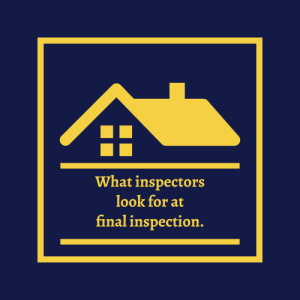september 2022, issue 2
ELITE PERMITS
BRIEFING ON CONSTRUCTION & Some other stuff
Written by TATIANA gUSt
It is important to understand that when you buy a house, the new owner becomes responsible for any and all potential issues that the house may have, including unpermitted work that may have been done by the previous owner or even a couple of prior owners.
So, in this article, I will mention a few things you can do to watch out for when buying a property.
The first thing you can do is to look at the property appraiser’s website within the jurisdiction; many appraisers include a rough sketch of the floor plan for the house.
It is not always accurate, but if you compare the floor plan of the potential house with the schematics from the appraisers, you can spot differences easily. If something is different, at this point, you can ask the seller for the permit that shows the changes that are not currently reflected in the appraisals. If they didn’t know about the changes, it could have been a previous homeowner who made the changes. At this point, the owner is made aware and will have to disclose this to any potential new buyer.

I wish what I recommended above would always work, but that is not always the case. Government agencies don’t always talk to each other. The appraisers normally check the properties more often than the building departments, and for a good reason, they want to get the value of the property with any additional improvements as accurate as possible, so the taxes are as precise as possible. On the other hand, the building department can only visit the property if there is an active permit. Therefore, in this scenario, the following can happen, the previous owner did an addition/remodel without a permit. The appraiser visited the property and discovered the addition/remodel, so the appraisers updated their schematics. Then, when you do your due diligence, by comparing the layout, the property, and the appraiser’s match. You think this is good, but in reality, the addition was never permitted. How do you prevent this?
Always ask your local building department for a list of any previous permits; even if they don’t have the plans, they have numbers and descriptions that identify the improvements. Another suggestion is to ask the seller if they have made any improvements; they will usually tell you without considering the permits.

Another good catch is to look for pictures of the properties online; many sellers will update the kitchen or bathroom, indicating a newly remodeled unit…and when you ask for the permit many times, they don’t have it. If you buy the building, you now become responsible for getting the permit. Most jurisdictions require a permit for a remodel, especially in condos, because that may affect your unit and others. The last suggestion is to ask your home inspector to check for any non-code compliance they may see. Code violations are often very easily identifiable by a professional, which indicates that something was done without a permit. It is not always hard to correct, but it is a headache nonetheless, so if it is something that you are willing to take on and you identify it early in your buying process, you may use the knowledge to negotiate a price that is worth the trouble of doing an after-the-fact permit.
Let me know if you have additional questions about the building permits or construction process. Follow us for more and share our blog!







